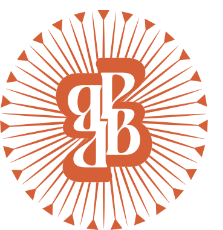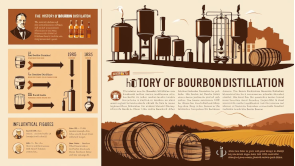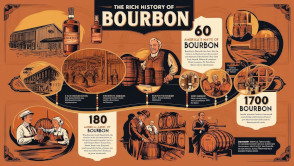
The Complex Relationship Between Prohibition and Bourbon
When discussing the history of bourbon, it’s impossible to ignore the seismic impact of Prohibition. This tumultuous period, spanning from 1920 to 1933, marked a pivotal chapter in the story of America’s most iconic spirit. While Prohibition sought to eradicate alcohol consumption, it paradoxically shaped the bourbon industry, leaving a legacy still felt today.
Prohibition: The Noble Experiment
Prohibition was born out of the temperance movement, which sought to curb alcohol consumption, believing it to be the root cause of societal ills such as crime, poverty, and family breakdown. The ratification of the 18th Amendment and the enactment of the Volstead Act in 1920 banned the production, sale, and distribution of alcohol, including bourbon. For distillers, this was nothing short of a disaster.
Before Prohibition, bourbon had become deeply ingrained in American culture, particularly in Kentucky, where the limestone-rich water and favorable climate made it the perfect place for bourbon production. Distilleries were thriving businesses, supporting entire communities. However, with the stroke of a pen, this vibrant industry was brought to its knees.
Survival Strategies: Adapting to Prohibition
For many distilleries, Prohibition meant closure. However, a few savvy producers found ways to adapt and survive. The federal government allowed whiskey to be prescribed for medicinal purposes, creating a loophole that some bourbon distilleries exploited. Distilleries like Brown-Forman and what would become Buffalo Trace obtained licenses to produce “medicinal whiskey,” which was sold in pharmacies.
This medicinal loophole kept the bourbon industry alive, albeit barely. Consumers could purchase up to a pint every ten days with a doctor’s prescription. Some families even stockpiled bottles in anticipation of the ban, creating a black-market demand for bourbon that fueled illicit trade.
The Rise of Bootlegging and Speakeasies
While legitimate distilleries struggled to stay afloat, bootlegging and speakeasies thrived. Illegal distillers—many of whom produced subpar or even dangerous whiskey—flooded the market with counterfeit bourbon. This period tarnished the reputation of American whiskey, as consumers often couldn’t distinguish between authentic bourbon and poorly made substitutes.
The rise of speakeasies, secret bars operating out of homes and hidden locations, kept the bourbon culture alive but also shifted consumer preferences toward cocktails. To mask the harsh taste of bootleg liquor, bartenders began mixing whiskey with sugar, bitters, and citrus, giving rise to classic cocktails like the Old Fashioned and the Whiskey Sour.
The End of Prohibition and Bourbon’s Revival
When the 21st Amendment repealed Prohibition in 1933, distilleries scrambled to rebuild. Many had gone out of business entirely, and those that survived faced a long road to recovery. American consumers, having turned to other spirits such as rum and gin during the dry years, needed to be reacquainted with bourbon’s unique character.
Post-Prohibition, bourbon distillers focused on rebuilding trust and quality. Innovations in production and aging techniques helped bourbon regain its status as a premium spirit. By the mid-20th century, bourbon had reclaimed its place as a symbol of Americana, celebrated for its craftsmanship and rich flavor profile.
The Legacy of Prohibition in Bourbon’s Identity
Prohibition, while a challenging era, ultimately shaped bourbon’s trajectory in profound ways. It forced the industry to innovate and adapt, while also cementing bourbon’s role in American culture. The survival stories of iconic distilleries during Prohibition are now part of bourbon’s lore, adding to its mystique and heritage.
Today, bourbon stands as a testament to resilience and ingenuity. Its resurgence in the modern era as a global phenomenon speaks not only to the craftsmanship of its producers but also to the enduring appeal of a spirit that survived America’s “noble experiment.”
In many ways, Prohibition didn’t kill bourbon—it made it stronger. As we savor a glass of bourbon today, we’re reminded of its remarkable journey through history, one shaped as much by adversity as by triumph.


